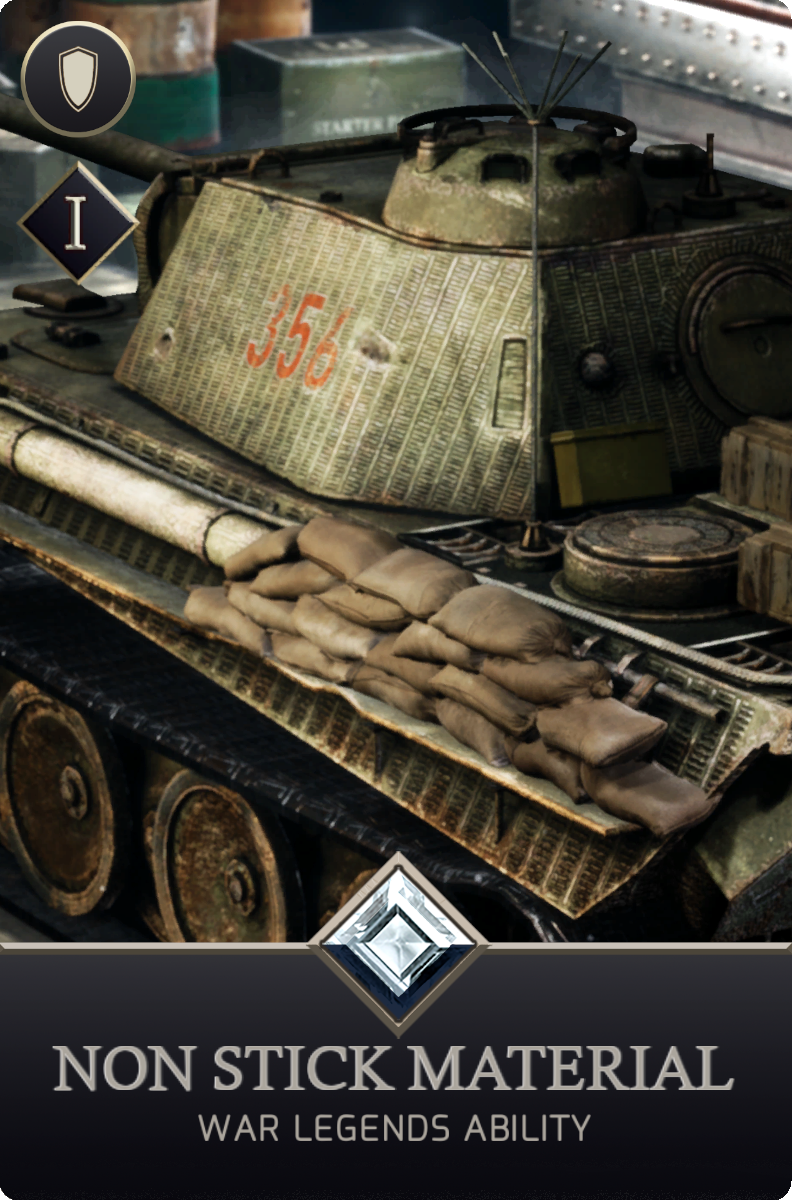


Ability Background
From 1943 onwards, the German Army decided to coat several of its combat vehicles with a new product: Zimmerit, which covered the armor of its tanks.
The German Army was aware of the enormous danger of magnetic mines. Magnetic mines, thanks to the magnet in their base, could be attached to any structure made of steel. Faced with this problem, Chemische Werk Zimmer AG of Berlin was asked to try to develop a chemical compound that would stop the mines from sticking to the tank's surfaces.
After several months of R&D, the Zimmer company developed a polymer with a composition of 25% vinyl acetate, used as an emulsifier, 40% barium sulfate, 10% sawdust, 10% zinc sulfide and 15% ochre pigment as a coloring agent. The German chemical company was under the condition that the raw materials from which the compound was to be made had to be cheap and easy to obtain. Germany, which was in the thick of the Second World War, did not have a surplus of resources.
The compound was called Zimmerit. It had the consistency of a diluted soft paste that gave off a solvent-like odor similar to acetone.
The polymer was applied directly to the surface of the armored vehicle. To enhance its effectiveness, two coats were applied. When applying the first layer, it was crucial that this layer adhered well to the metal surface. When applying the first layer, small square patterns were made on the surface. This pattern would then facilitate the adhesion of the second layer. Once the first layer was applied, it was left to dry for 24 hours at room temperature.
If the curing of the first layer was satisfactory, a second layer, about 5 mm thick, was applied and grooves were made to roughen the surface. Once this was done, the surface was dried with hot air for an hour to harden the polymer and prevent it from becoming brittle, while at the same time improving the adhesion of the tank's armor plates. Once finished, the vehicle was painted with camouflage (including Zimmerit).
This new compound meant an increase in weight of between 70 and 200 kg, depending on the tank model. This meant higher fuel consumption and a significant loss of speed.
The task of the polymer was to present a rough surface and create a gap between the mine and the surface of the vehicle. All this was intended to interfere as much as possible with the adhesion of the mine magnet.
Finally, the Zimmerit had two major drawbacks:
Firstly, the polymer became brittle at very low temperatures.
The second problem was that it tended to combust when hit by some types of projectiles, which was a major weakness for the tank.
Because of this and the reduction in enemy use of magnetic mines in mid-1944, the zimmerit was gradually phased out until its total disappearance.








